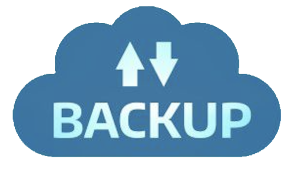
Salesforce Data Backup and Recovery
** Update 10th March 2021 from Salesforce available from here**
We have reversed our decision to end our Data Recovery Service, effective immediately. If you previously relied on this functionality as your fail-safe and/or backup and restore strategy, you can continue to do so.
Based on customer feedback, we are pleased to announce that we will pilot Salesforce backup and restore services built natively on the Platform this summer. We’ve co-designed these services with customers and we expect to deliver the performance, speed, and scale that you’ve come to expect from the Salesforce Platform while continuing to provide additional ways to innovate and extend these capabilities through our vibrant ecosystem.
********
If you’ve ever lost a document you’ve sweated over for hours you will know the importance of ensuring backups are in place. Salesforce is no exception to this.
If you don’t know whether your Salesforce data is being backed up, please ask your Salesforce administrator ASAP. Salesforce is retiring their data recovery services at the end of this month (July 2020) and it will be your own responsibility to ensure you have data backups and a recovery procedure in place. Please refer to this article for further information.
What we are talking about in this post is data recovery of accidental or intentional data deletion or modification within your own Salesforce environment performed by one of your users, or an automated process. If there is a fault on Salesforce side such as a hard drive failure, Salesforce has their own internal process to recover and restore your data.
Data Backup
For data deletion, provided it’s not a hard delete which only a Salesforce administrator can perform, these records go into the Salesforce Recycle Bin where they can be recovered within 15 days. However, if there is a hard delete, a deletion past 15 days, modification you need to restore, or records have exceeded the Recycle Bin limit, there are various options for backing up your Salesforce data which we will go through in this article.
Out of the box options include:
* Data Export – scheduling of regular weekly or monthly exports depending on your license edition of Salesforce. This will extract all your data and files (if option is selected), zipped up and must be downloaded within 48 hours.
* Data Loader – executable file that can be put on a server or desktop which uses Salesforce APIs to extract your data. With this option the setup will need to be reviewed as new objects are created in your environment to ensure they are added to the backup files created. Please note that this option is for Salesforce customers that are licensed for Salesforce API access.
* Report Exports – manually export a report of your data, this is probably least preferred as you run the risk of missing important related data. Related data such as files, emails and activity history (tasks/events) are those which would run the risk of being missed. You’ll also be relying on a user to remember to do a regular export as this process isn’t automated.
* AppExchange / Third-Party Apps – There are a number of third-party options we have experience with, a lot of these are very robust solutions that cover not only data, but also metadata (your configuration and code changes). Most include the ability to recover data back to Salesforce including related data (activity history/emails/files) in the process. Backup frequency is more regular in most of these products we have come across, typically daily.
Data Recovery
Onto data recovery, every Salesforce customer should document their data recovery procedure and ensure it has been tested. With the out of the box options keep in mind that there is a lot of work involved in restoring the data back into Salesforce if you need to also include related records such as files, emails and activity history. It might be as an organisation you make the decision to restore the main record such as an account and related contacts and decide that the rest of the data due to the time it would take to get an admin to restore would be ignored and accessed directly within the zip file Salesforce provides (which is in csv format). This approach will be fine for some organisations.
For other organisations losing any related data will be an issue and this is when we would recommend one of the AppExchange / Third-Party options are explored further. As mentioned earlier they will allow you to restore the original record and optionally the related records much easier than the out of the box options mentioned.
Please remember to have your data backups in place as this is your responsibility. If you would like to discuss these options presented or just aren’t sure if you have backups in place and would like us to review, please reach out to us at Big Data Digital.
